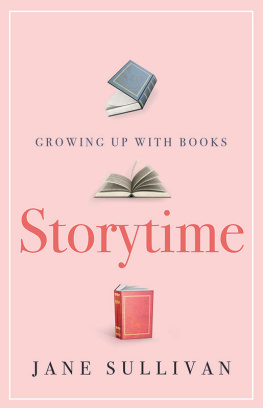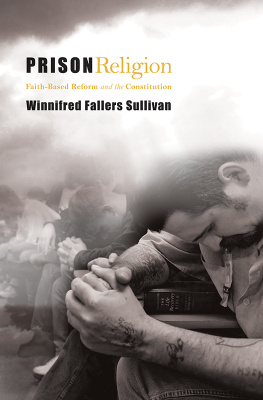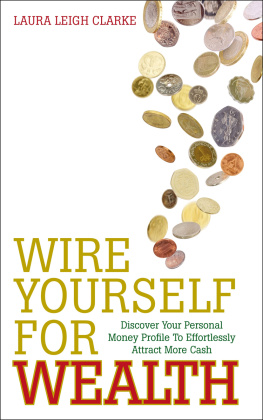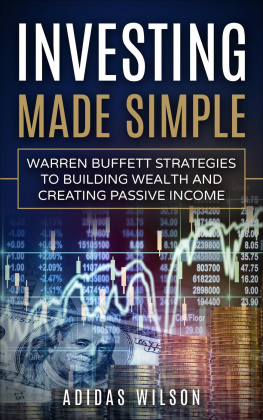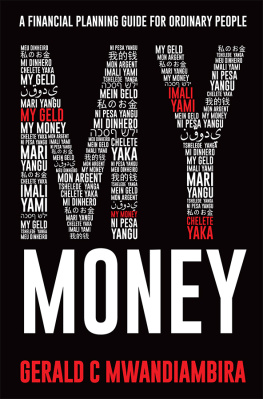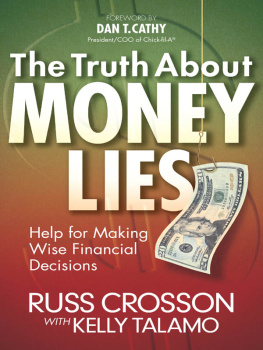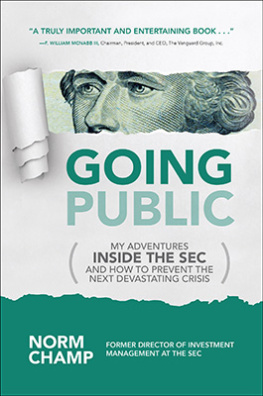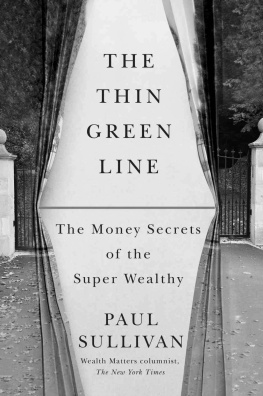
Simon & Schuster
1230 Avenue of the Americas
New York, NY 10020
www.SimonandSchuster.com
Copyright 2015 by Paul Sullivan
All rights reserved, including the right to reproduce this book or portions thereof in any form whatsoever. For information, address Simon & Schuster Subsidiary Rights Department, 1230 Avenue of the Americas, New York, NY 10020.
First Simon & Schuster hardcover edition March 2015
SIMON & SCHUSTER and colophon are registered trademarks of Simon & Schuster, Inc.
For information about special discounts for bulk purchases, please contact Simon & Schuster Special Sales at 1-866-506-1949 or .
The Simon & Schuster Speakers Bureau can bring authors to your live event. For more information or to book an event, contact the Simon & Schuster Speakers Bureau at 1-866-248-3049 or visit our website at www.simonspeakers.com .
Interior design by Ruth Lee-Mui
Jacket design by David Drummond
Jacket photograph: Gates and Drive of a Country Estate 100 Words/Shutterstock
Library of Congress Cataloging-in-Publication Data is available.
ISBN 978-1-4516-8724-8
ISBN 978-1-4516-8726-2 (ebook)
To my girls,
Laura, Virginia, and Phoebe
| CONTENTS
|
|
|
|
|
|
|
|
|
|
|
|
|
|
|
|
|
|
|
PROLOGUE
| LUNCHING WITH WEALTHY PEOPLE
O n a crisp spring morning, I sat in an exquisitely refurbished town house a block from New Yorks Metropolitan Museum of Art. I was listening to four men worth tens of millions of dollars argue over who had the poorest childhood.
With servers laying out a multicourse lunch in an opulent drawing room, the men tried to outhumble each other. Allen Wolpert, a former consultant at Arthur Andersen and then Accenture, boasted that he grew up in the Brighton Beach section of Brooklyn and it was rough. His face had a fleshiness often associated with men who have risen from nothing to great wealth, but his voice still carried the boroughs distinctive, nasally accent. What block? shouted Tommy Gallagher, who started on Wall Street right out of high school because he could not get into college. When he heard the answer, he nodded: Wol-pert was the real deal. Gallagher may have been wealthy, but he was Brooklyn through and through. He rose to become the vice chairman of CIBC World Markets when it was a high-flying financial firm. He lived on tony East Seventy-Fifth Street in Manhattan and had a beach house in the Hamptons, the summer retreat for Manhattans wealthiest. But that day he was dressed in a blue T-shirt underneath an old, green oxford. The combination made him look more like a neighborhood bartender or a washed-up boxer than a decamillionaire. Between them sat Steve L., a proprietary trader in Greenwich, Connecticut. He wanted in on this game. We had no money, he said, shaking his well-groomed head for emphasis. I mean, no money. Nothing. When pressed by the other men, Steve L. said his father had been a professor in northern Virginiaa euphemism for the University of Virginia. A college campus was never going to be the mean streets of Brooklyn. He was out.
But then the quiet guy sitting next to me piped up. Steven, a short, soft man in his late fifties who would go unnoticed on a city street, said he had grown up in the Bronx, with a cabbie as a father. Not only did they have no money, but if it hadnt been for a lucky break his father got, he wouldnt be here today. One of his fares got me into Dartmouth, he said. The group was impressed. He had gone from nothing to beyond the others and had the fortune to prove it. Steven told me he had owned residential real estate in East Harlem but had sold his company in March 2007 at the height of the property bubble. The timing of the sale sounded fortuitous to me, but it didnt raise any red flags. People who invested in real estate could grow exceedingly rich just as quickly as they could lose everything. He had gotten lucky on the timing of his sale, perhaps, but surely he had put a lot of effort into his business. That day, he easily won the humble game. What Steven had left out was that he had once been known as one of the worst slumlords in New York Citya distinction that netted him $225 million for his company.
I listened to these men with a sense of bemusement and fascination. They were all in their fifties, but they had been trying to outdo each other like teenagers. They had succeeded in their professions but could not stop competing. I may not have wanted to have dinner or even a drink with any of them, but I admired what they had done: made themselves financially secure for life through their own work. Their success was appealing to me. It was 2011 and the economic recovery in the United States was weak. I had come to believe that the economy was changing, and that the burden of security in life and retirement was going to fall squarely on each of us. I believed that making money was getting harder, and holding on to it harder still.
These four men were members of Tiger 21, an investment group with some two hundred members in the United States and Canada. To join the group, each man needed at least $10 million and a willingness to pay an annual membership fee of $30,000. In return they met one day every month to talk about their investments, though just as often they discussed their feelings in one of the few groups in the world where they would not be judged as ungrateful rich guys. They were all rich guys, grateful or not. As one of them, Leslie Quick III, son of the founder of the Quick & Reilly discount brokerage, told me, Where can I talk about my problems and other people wont say, Youve got a lot of money, bitch, bitch, bitch? I do have a lot of money, but I still have problems. Sure, theyre high-class problems, but theyre still problems.
I was there with about a dozen members in my role as the Wealth Matters columnist for the New York Times . They were going to examine the investment decisions my wife and I had made the way they examined their own choices. I thought this exercise might make an interesting column. While the monthly Tiger 21 sessions featured updates on the world economy, investment tips, speakers, and a nice luncha buffalo-mozzarella-and-tomato salad, poached salmon, and sauted asparagus; a crisp chardonnay served all aroundthe signature moment was the Portfolio Defense, whereby one member opens up his investments to the brutal scrutiny of the eleven other people in the group. He must tell the truth and then listen while everything is critiqued. Its tough love. They had promised to analyze the financial decisions my wife and I had made just as they did those of each member. By their standards, the investments we had were insignificant and simple. But personally I wanted to know how my wife and I had thought about our financial lives. I was pretty confident. I thought everything would go well.
The choice of art on the wallsphotos of Chinese Communist meeting halls in decayshould have been my clue that this analysis was going to be torturous. The members took turns eviscerating our financial planning. I felt like the sole mole on a Whac-A-Mole board: when one old mans arm got tired, he passed the mallet to another and so on and so on. They werent mocking our investmentsthese were men who had tens of millions of dollars on up to Quick, whose family had sold Quick & Reilly for $1.6 billion in 1997. They were tearing us apart for simpler things: our expenses, our insurance, our view of the future being like the present but with additional children. They were attacking us for errors that we had made, but that I was sure other people had made as well. Had we saved all we could? Had we indulged in luxuries that we could pay for but couldnt really afford? Had we planned how we were going to pay for our life if something went wrong? Our income was high, but how long could we replace it if one or both of us lost our jobs or if illness ended our careers? Risk was the word I heard over and over. Their judgments of the life we had built, with care and foresight, terrified me.


